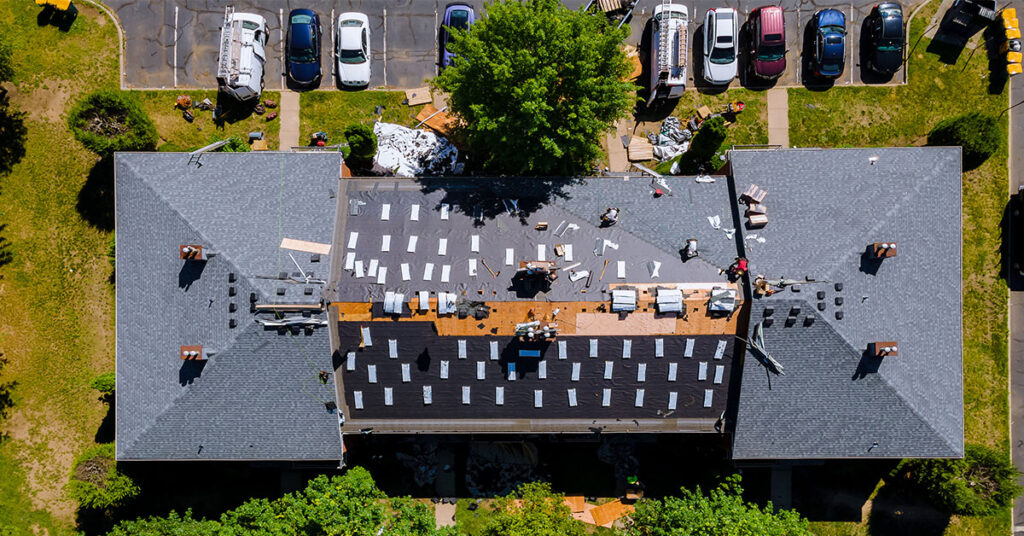Rubber roofing differs significantly from traditional flat roofing methods. Compared to conventional flat roofing, rubber roofing involves applying a liquid coating that cures and strengthens over time. Traditional flat roofs require stripping old materials, but rubber coatings can be applied directly over the existing roof.
It saves time and keeps your crew’s energy by omitting the removal step. There are three critical steps in installing a rubber roof: preparing the roof, addressing any damaged portions, and applying the new coating. So, this post will explore how to install rubber roofing in Dallas, Texas. So get started.
Pre-Installation Preparation for Installing Rubber Roofing
It’s essential to lay the groundwork for a smooth rubber roofing installation before starting. Here are the key steps in the pre-installation preparation phase:
1. Gather Necessary Materials and Tools
Start by making sure you have all the materials and tools you need. It includes the EPDM rubber membrane, adhesive, seam tape, and any other components specified by the manufacturer. Make sure your inventory is up-to-date before installing.
2. Assess the Roof’s Condition
Examine the existing roof thoroughly. Identify any signs of damage, leaks, or structural problems. The rubber roofing system will last longer if these issues are addressed before installation.
3. Clear Debris and Clean the Surface
Preparing a clean and debris-free surface before applying rubber roofing is essential. Clean the roof of any loose materials, dirt, or debris. Keeping the surface clean ensures proper adhesion.
4. Measure the Roof Area
The foundation of a successful rubber roofing installation is accurate measurements. Measure the roof area carefully to figure out how much EPDM you need. Make sure you do this to avoid material shortages.
5. Plan the Layout and Seams
Considering the roof’s dimensions and architectural features, plan the EPDM membrane layout. Place seams and overlaps strategically for an aesthetically pleasing and efficient installation.
Following these pre-installation steps, you’ll have a successful rubber roofing project. The preparation phase is vital to the overall effectiveness and longevity of the roof.
Safety Measures for Rubber Roofing
Use sturdy boots, safety glasses, gloves, and hard hats when installing rubber roofing. Working at heights requires stable ladders, scaffolding, and safety harnesses when necessary. Follow the manufacturer’s guidelines for materials and chemicals, and don’t work in bad weather.
Communicate safety protocols regularly with your team and conduct briefings before work starts. These safety measures minimize risks associated with handling tools, working at heights, and using potentially hazardous materials.
Now, let’s look at how to install rubber roofing in Dallas, Texas.
How to Install Rubber Roofing
Let’s now look at the step-by-step process of installing rubber roofing. Make sure you follow these steps to get a durable roof:
Applying Adhesive
Select a high-quality adhesive recommended by the EPDM membrane manufacturer for rubber roofing installation. Make sure the ambient temperature aligns with the adhesive’s guidelines. Apply the glue evenly to the thoroughly cleaned roof surface using an appropriate applicator. Cover the entire area where the EPDM membrane will be applied.
Placing Rubber Roofing Material
Follow the predetermined layout when unrolling the EPDM membrane onto the adhesive-covered roof surface. With a soft broom or roller, smooth out any wrinkles or bubbles to ensure proper alignment and coverage. Rubber roofing materials must fit tightly and uniformly during this step.
Trimming and Shaping
Once the EPDM membrane is installed, trim any excess material with a utility knife. Ensure the vents, edges, and other roof features are precisely cut for a polished appearance. Maintain accuracy by working methodically through the trimming process.
Securing Edges and Seams
Using termination bars or screws, secure the edges of the EPDM membrane. In addition, reinforce seams with seam tape to ensure a watertight seal. Follow the manufacturer’s instructions carefully to ensure the roofing system lasts and works.
Inspecting and Quality Check
Perform a thorough inspection of the rubber roofing to identify any visible defects, loose seams, or areas that need attention. Maintain the roofing system’s integrity by addressing any issues found during the inspection. Doing this final quality check is crucial if you want a reliable rubber roof installation.
Post-Installation Care for Rubber Roofing
Once the rubber roofing has been installed successfully, attention turns to post-installation care. Proper maintenance and addressing issues quickly will make your rubber roof last longer. Here’s a guide to post-installation care:
Recommendations for Routine Maintenance
Establishing a routine maintenance schedule is essential for preserving the longevity of your rubber roofing. Regularly clean your roof surface, removing debris, leaves, and anything else that could compromise it. During these inspections, ensure seams, edges, and fasteners are secure and intact. Keep your rubber roof healthy by incorporating routine maintenance into your schedule.
Addressing Common Issues
Monitoring the rubber membrane post-installation for wear, punctures, and damage is crucial. If there are any small tears or punctures on the EPDM, you should immediately repair them using a kit designed for the purpose. In addition, keep an eye out for leaks and fix them immediately to prevent water damage. Maintaining the effectiveness of your rubber roofing system requires timely intervention.
Monitoring Adhesive and Fasteners
Checking the adhesive and fasteners used during installation is a proactive way to maintain your rubber roof. You should fix any loosening or deterioration as soon as you see it so the roofing system stays in place. Maintaining the adhesive and fasteners on your rubber roof is part of ongoing care.
Consider Professional Inspection
Although routine maintenance is good, scheduling professional inspections provides more peace of mind. It’s easier to identify potential problems early on, and professionals can make recommendations for any repairs. Regular inspections ensure your rubber roof receives expert attention, potentially extending its lifespan.
Read More: Can You Install a Metal Roof Over Shingles
The Takeaway
Rubber roofing installation requires meticulous planning, meticulous execution, and ongoing maintenance. You can ensure a resilient and durable roof by following these steps, from pre-installation prep to routine maintenance.
A well-installed rubber roof offers all the benefits of energy efficiency and longevity. Consider professional inspections to ensure lasting success and put safety first. With rubber roofing, you’ll enjoy a weather-resistant, secure structure that lasts.


